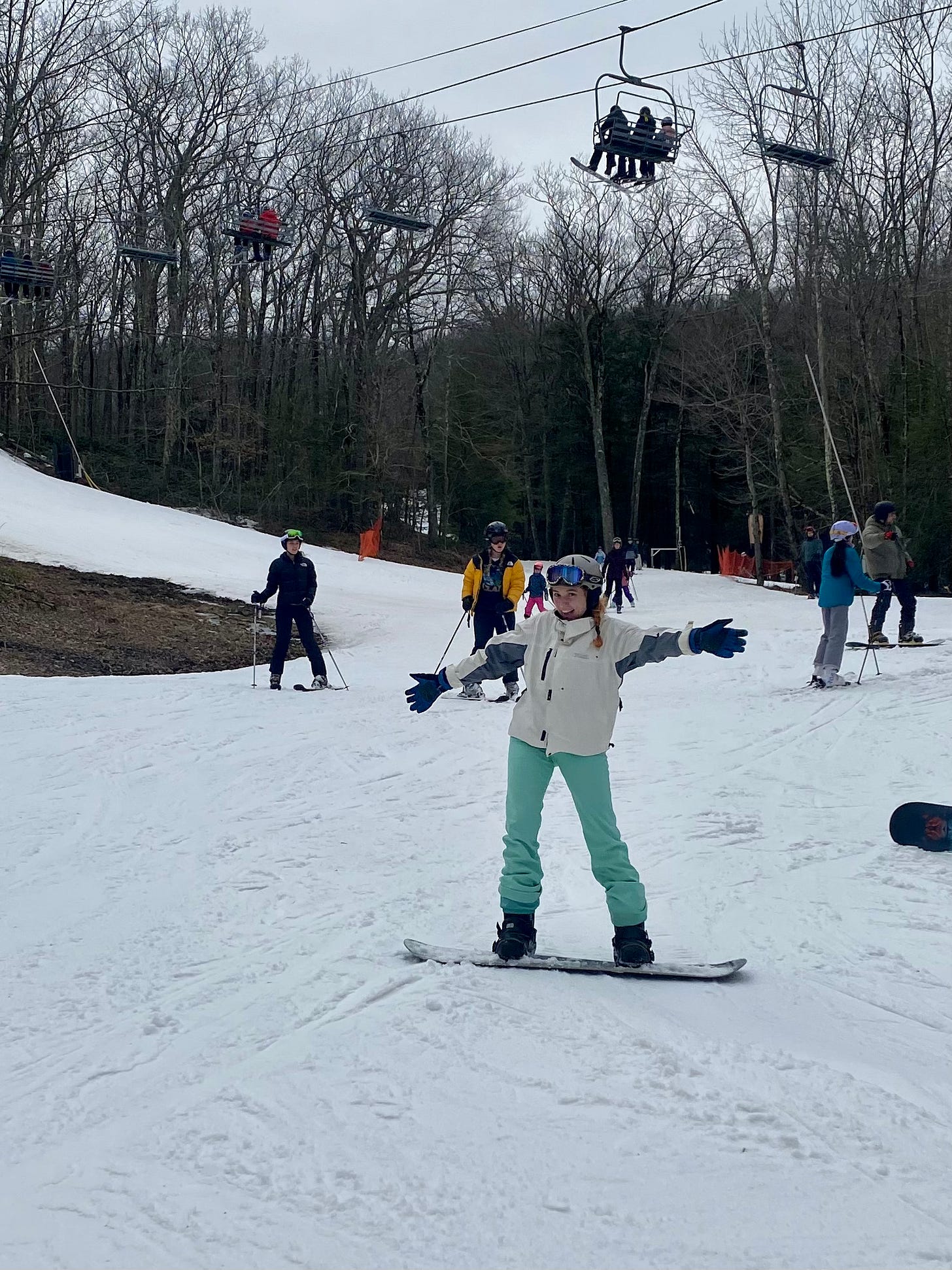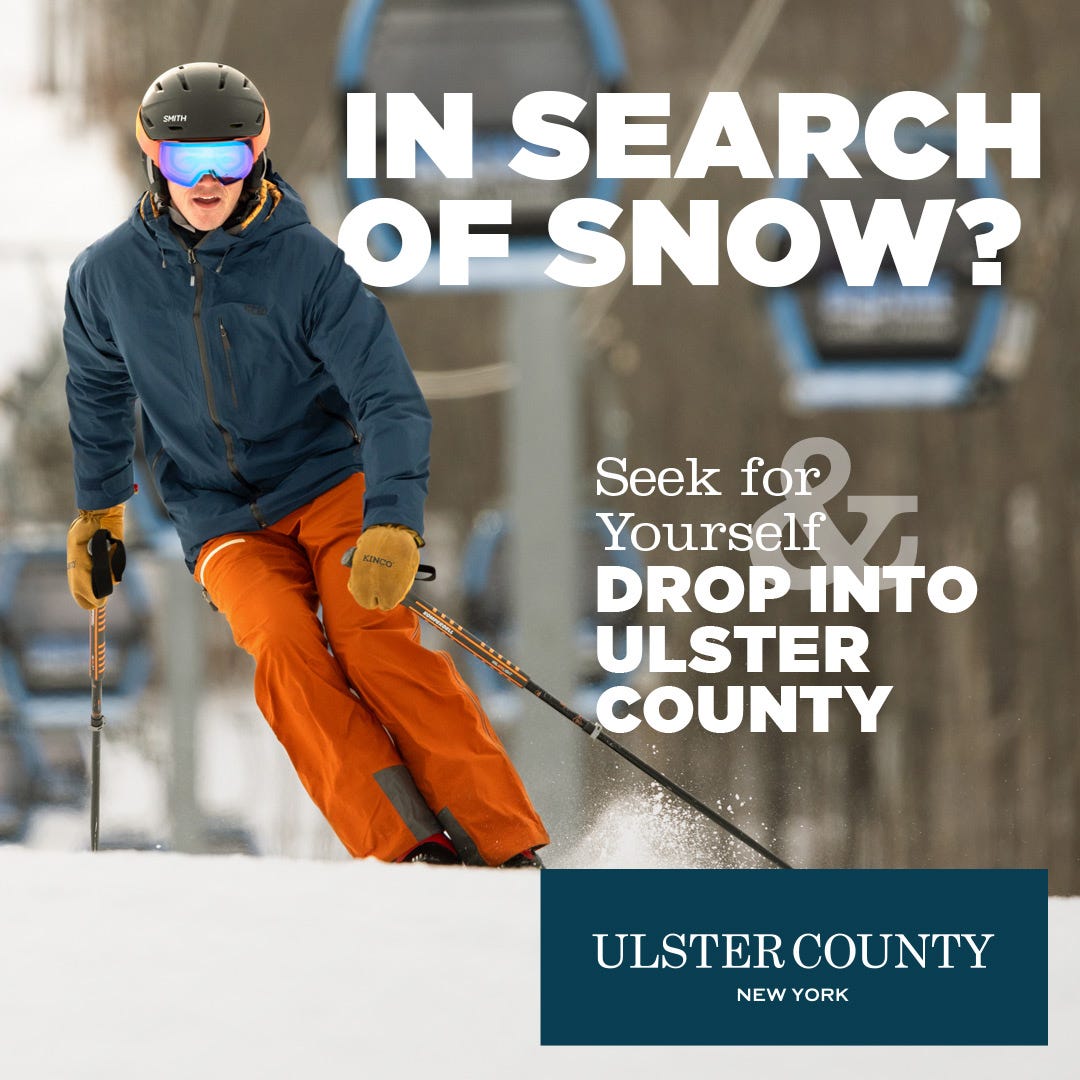What I Wish I Knew: Tips From A New(ish) Snowboarder
Learning To Snowboard As An Adult Doesn't Have To Be Daunting
For most of my life, I didn’t want to learn how to snowboard. I had made one single, ill-fated and freezing cold attempt at skiing when I was in middle school in Connecticut, at my dad’s urging. The hour it took me afterward to get dry and feel my toes again had me convinced winter sports simply weren’t for me.
But when I graduated from college outside New York City, something shifted. I’d joined the rowing team my freshman year, and it had expanded my understanding of the kinds of activities I might enjoy: Suddenly, “cold and wet” weren’t necessarily disqualifying factors. I found myself revisiting the sports I’d previously written off. I had heard the adage that skiing was “easy to learn, but hard to master,” and that snowboarding was the reverse. Always one to get the worst out of the way first, I decided I wanted to learn to snowboard.
Now I’ve been snowboarding for two years—this winter will be my third season—so here are a few things I wish I had known about snowboarding when I first started.
Snowboarding doesn’t have to be expensive
I got excited about snowboarding right after college, but I didn’t start right away. One of the main reasons I waited so long between realizing I wanted to learn and actually getting onto the mountain was cost. While skiing may be more associated with wealth, the general understanding is that snowsports are expensive.
But this isn’t always true—or at least, it doesn’t have to be. There are definitely ways to save money while learning to snowboard. For one thing, some mountains run promotions for groups like high school and college students, healthcare workers, and veterans. If you have PTO stored up, hitting the slopes on a weekday is often less expensive than taking a weekend trip. Plus, some mountains and other organizations offer programs designed to connect those who have historically had less access to the slopes with opportunities to learn skiing and snowboarding.
If you live within a day’s drive of a mountain, a day trip is always cheaper than an overnight, and if you live in the Northeast, you may even be able to reach some slopes via public transit. And if you feel overwhelmed by the logistics or daunted by the cost of trying to put a trip together yourself, OvRride even offers charter buses with easy access to a number of nearby mountains. Handing off the planning to professionals can help streamline your first snowboarding experience, and the variety of routes makes it easier to check out multiple mountains.
Make sure you’ve got the gear
When I was first learning, I felt overwhelmed by the sheer number of items I would need. I rented my board and boots (and you can and should too, at least until you decide you love the sport), but still had to find snow pants, a coat, googles, and gloves. And of course, the most important piece of gear, the helmet.
Avoid one of my mistakes by understanding that you can’t just wear any old gloves. As you learn to snowboard, you’re going to be falling down a lot, and you need gloves that can handle skidding across the snow and ice without tearing or letting your fingers get cold and wet. Beyond the basic outer layers, you also need to dress warm, but not too warm. Even in the winter temperatures, you’ll likely work up a sweat, so sheddable layers are your friend. Also, it may seem counterintuitive but tighter, more fitted socks will likely keep you warmer than big bulky ones, and be more comfortable in your boots.
Buying these things new can add up fast, and most people don’t want to drop a bunch of money on a casual hobby. Facebook Marketplace and Craigslist can be great places to find second hand stuff. If you’re lucky enough to know other snowboarders or skiers, you can also borrow gear—on my first few runs, everything I wore was kindly loaned by my friends, my father, and even my boss.
If you’ve taken your first couple trips and think snowboarding is for you, you can also consider renting gear for the season from spots like Panda Sports and Paragon Sports. These longer-term rates are often cheaper than day rentals at the mountain, and you won’t have to waste valuable boarding time standing in pick-up and return lines.
It’s okay if you never get good (but you should definitely take a lesson)
Learning to snowboard in my mid-twenties has meant I missed out on the early introduction experienced by toddlers in neon snowsuits and dinosaur helmets who zip fearlessly down the mountain. I envy these kids—specifically, I’m jealous of their proximity to the ground, which I imagine makes falling down way less scary.
Because that saying about snowboarding being “easy to learn?” It wasn’t necessarily true, at least not for me. I fall down a lot, which is why I know that one thing definitely worth splurging on as a beginner is a snowboarding lesson. Knowing how to stop and turn is key to both having a good time and avoiding collisions with trees, lift supports, and your fellow boarders. At the very least, they can teach you how to get on and off the lift, and angle your body when you fall to keep aches and pains at a minimum.
Taking a lesson can also help you figure out if you’re more comfortable boarding “regular” or “goofy” (that means with your left or right foot at the front of the board, something else I wish I’d known when I first started).
One lesson can be more than enough though, depending on your goals. If you’re looking to hit the black diamonds by the end of your first season, you might want to pursue further classes. But for lots of people (myself included) being a “just okay” snowboarder is a blast. You don’t have to compete with the folks who’ve been boarding their whole lives to have a good time, and sticking to green and blue trails can still deliver thrills and killer views.
When I first learned to row, I loved the way it put me in the middle of a harbor at dawn, the glassy water gilded by the rising sun, and I wanted more activities that would connect me with nature. Because I learned to snowboard, I’ve cruised through forests so frosted with snow the trees look more like pastries, and gazed out over stunning views from what feels like the top of the world. Now, you're a bit more prepared to do the same.
Disclosure: OvRride, which was mentioned in this story is the primary financial backer and publisher of City and Slopes Magazine.
Lindsay Lee Wallace is a writer and overthinker focused on culture and healthcare whose works has appeared in TIME, Slate, Teen Vogue, and elsewhere.




